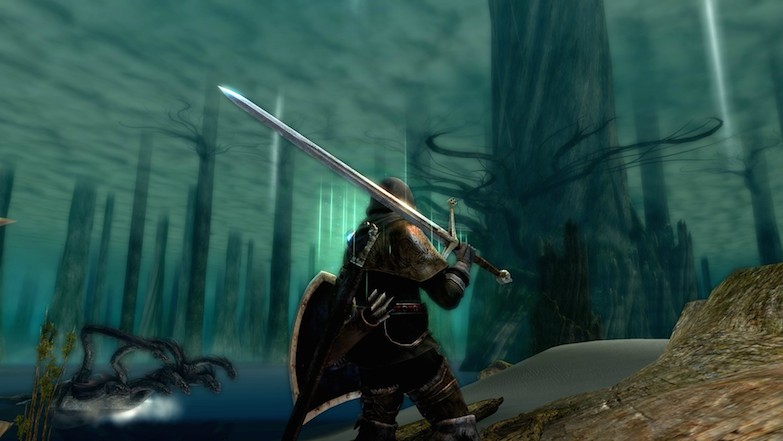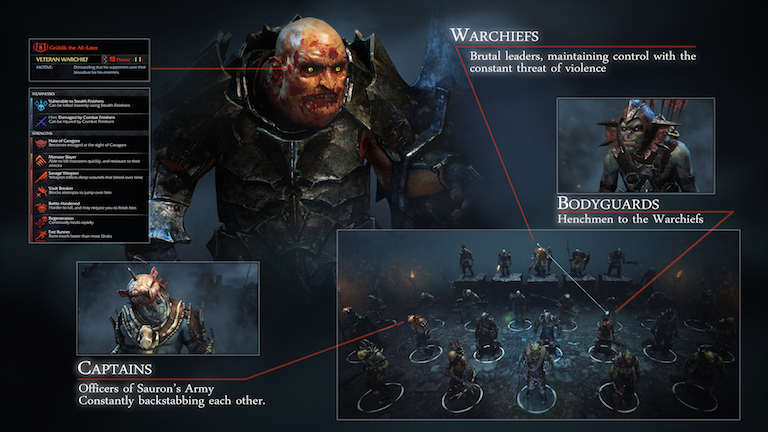When I reflect on what’s missing from a lot of games these days, my first thought is “a cure for my crippling loneliness.” My second thought? A sense of discovery and mystery, of finding and uncovering of my own accord pieces of a game’s lore and world. I like going into a world that feels real, one that feels like it wasn’t created with my satisfaction in mind, but rather could have organically existed without my participation. A game shouldn’t have to spell everything out for me, because its job shouldn’t be to please the player. Not all games have to be fun. Games can be more than just things to do in order to pass the time; they can be challenging, emotionally engaging, thought provoking, and even sad. Not every game needs to make me excited, it just needs to succeed in its own right in whatever it sets out to do. Help from the game or being given a sense of power is nice sometimes, but I usually don’t want a game to hold my hand. Why do some games assume I wouldn’t be able to find my own face without a big glowing waypoint?
Two recent games come to mind that have really left a lasting impact on me because of their worlds and infrastructure: Middle Earth: Shadow of Mordor (developed by Monolith Productions) and Dark Souls (developed by From Software). I’m not trying to make the claim that these two are the only recent games to have intrigued me lately or that other games are complete failures, but rather that these are merely two examples of the kind of successful world building that I’m talking about. These two games have their own ecosystems of sorts and allow the player to (for the most part) uncover their respective worlds’ mysteries on his or her own.
Shadow of Mordor takes place in Tolkien’s Middle Earth and follows Talion, a ranger from Gondor who seeks revenge upon Sauron’s henchmen for the death of his wife and son. The actual narrative of the story mode is pretty dry and really doesn’t feel all that original. Too often Shadow of Mordor seems like it’s trying to compete with the rest of the Lord of the Rings mythos by imitating other works within the Lord of the Rings universe, namely the Peter Jackson films. Its “me too” attitude makes it look like a little kid trying to wear his dad’s suit; it’s kind of cute at first, but when it tries to drive to work and do your taxes, the act starts to feel a little forced. Its many attempts at shoe-horning Gollum into the plot come off as contrived and Celebrimbor’s endless movie quotes can get a bit tiring, making the story missions in general feel a bit lacking.
However, the game more than makes up for these shortcomings with its Nemesis system, which produces an ever-changing hierarchy of Uruk warchiefs and commanders. The game tracks the rank and combat strength of each of Sauron’s Uruk captains and allows the player to aid, defeat, or enslave any of these captains in their struggles for power. When the player is defeated by one of these captains, that captain will then increase in strength and taunt the player for his failure if he or she chooses to go back for a second attempt at his life. The game will also track the deaths of your friends, allowing you to take vengeance upon the Uruk captain that killed your poor buddy. Lastly, Uruks shift their power positions even without the input of the player, making this system of power feel real and organic. This system is introduced to the player through the main storyline, but for the most part Talion’s interactions with the Uruk captains and bodyguards are not necessary for the completion of the game–which is odd because this aspect is by far the most interesting part of the game.
This ever-shifting ecosystem of war and succession is smart and refreshing and breathes life into an otherwise dull romp through Middle Earth. The game’s world and lore also come out far more clearly in the numerous collectibles that the player can optionally pick up all over the game map. Each collectible is embedded with some sort of memory or engraving, allowing a glimpse into the mind of the individual who owned said collectible. For example, Torvin the dwarf hunter is relatively uninteresting and one-sided in the main story; however, through a few pieces of collectible intel we learn about his relationship with his brother and the reasons for his passion to hunt the Legendary Graug. These pieces of intelligence and history provide context to the action and give the player a glimpse of the micro-level workings of Mordor, something that enhances the overall experience of the game world.
Even though Shadow of Mordor succeeds in terms of its Nemesis system and enlightening collectibles, in some places it still feels like it’s trying to hold the player’s hand. Once the player gets to an area’s watchtower, every collectible and objective is revealed on the game’s map, eliminating the player’s need to seek out secrets for himself. Instead of letting the player seduce and woo the game into revealing its secrets, Shadow of Mordor just drops its pants and flaunts its goods at the drop of a hat. While some may ask why I’m not more critical of its transparency, it’s because I’m just happy that Shadow of Mordor came to the party with pants on at all (I’m looking at you, Pokémon games; I can indeed chew my own food, contrary to how you treat me).
Unlike Shadow of Mordor, Dark Souls is engrossing and intelligent the whole way through. Along with its predecessor, Demon’s Souls, and its sequel, Dark Souls II, Dark Souls has entered the gaming canon as one of the most punishing and cutthroat games in recent years. Compared to some other modern games that treat the player like an idiot and the player’s character like a demigod, the world of Dark Souls seems intent on kicking the player’s undead keister back to 1988. Granted, it ‘s hard, but Dark Souls is perhaps characterized too often solely in terms of its difficulty; there are far more interesting things to say about the game than “it’s harder than grandma’s month old fruitcake.” For one, Dark Souls gives the player a great deal of control over almost every aspect of the game, including the unfolding of the plot. The player controls a chosen undead in his mission to traverse Lordran and defeat the hollowed husk of Lord Gwyn, the world’s previous ‘caretaker,’ if you will. If that sounds vague, that’s because it is vague; the story of Dark Souls isn’t expressly given to the player aside from a few scarce cutscenes. All other bits of story have to be gleaned from NPC’s, from item descriptions, or from observation of the world’s topography and architecture. The item descriptions in particular give poignant clues to the nature of some of the game’s bosses and lore, while NPC’s breathe life into the world and hint at a vastness to the lands of Dark Souls.
Not only does Dark Souls leave its story ambiguous, but it leaves its gameplay elements and explorable world a mystery as well. Once you leave the Undead Asylum and its tutorial scenarios behind, the world of Dark Souls is left up to the player to explore (and probably perish in). Failure and character death are staples of gameplay, but they’re not meant to be deterrents; rather, they’re motivational learning experiences–and death in this game acts as a teaching tool. Dark Souls is meant to be taken meticulously and patiently. Rashness and high stakes are often met with death and loss of time and resources. Combat is like a morbid kind of dance where if you miss a step someone stabs you and steals your wallet (after which you get up, dust yourself off, and go back to get your wallet, but this time you’ve brought Mr. Zweihander and he’s out for blood). In addition to the regular combat, boss fights are an interesting endeavor as well. Bosses are scary and do big-boy damage, but their patterns can often be learned and exploited, and often times the most apparently formidable bosses have the biggest, albeit generally secret or hard to find, weaknesses (in the case of the Stray Demon, you can get him stuck on a pillar, rendering him harmless and easily killable).
The combat system has a lot in common with the missions and objective structure of the game. Which is to say that there really is no overtly easy or straightforward way of moving through the game, but the clever player can find shiny new items and areas and will make it much farther than the impatient player. Though there are mandatory objectives that must be completed in order to finish the game, many can be done in interchangeable order and others can be skipped or ignored. Entire sections of the game can go unnoticed by the player, like the Painted World of Ariamis or Ash Lake, the latter being arguably the most visually striking and beautiful section of the game; it’s reached by exploring a hollowed out tree located in the corner of one of Dark Soul’s main story areas. The Painted World also raises numerous questions about its origins and purpose: Who made it? Why does this place exist? These questions, among others, are never really answered, and I’m okay with that. I want to be able to wonder and make up my own conclusions. I don’t want to be spoon-fed every little bit of information and lore.
I don’t want this piece to be one of those “all modern video games are dumb and for babies” posts, because frankly those kinds of opinions are often uninformed and stuck in the past. Not all games have to be mysterious, complex, or highly intelligent, but I greatly appreciate those that make me forget that I’m playing in a constructed world. Sometimes I just want to get lost somewhere else and experience something new and exciting for myself, as I expect do many other players of video games do. Shadow of Mordor and Dark Souls are both excellent games, and should be celebrated for their success, because for someone who feels a bit jaded these are sometimes a breath of fresh air. In a real world filled with monotony and busy work, games like these let me stretch my imagination a little bit.


Recent Comments